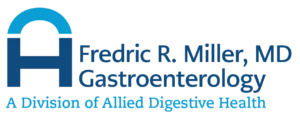What Is Diagnostic & Therapeutic Upper Endoscopy?
Upper endoscopy is an outpatient procedure that examines your upper digestive tract, which extends from the mouth to the duodenum, the top of the small intestine. Also known as esophagogastroduodenoscopy or EGD for short, this procedure takes a closer look at the esophagus, stomach, and duodenum either as a screening tool or as a treatment. Your gastroenterologist will insert an endoscope through your mouth while you are under sedation during the procedure. An endoscope is a long, thin tube with a small camera attached at the end. There are two types of upper endoscopy— diagnostic and therapeutic endoscopy.
What Is Diagnostic Endoscopy?
Diagnostic upper endoscopy can be used as a screening tool for esophageal or gastric cancer.. If you’ve presented to your gastroenterologist with certain symptoms, they may want to perform an upper endoscopy. Symptoms may include:
- Difficulty swallowing
- Nausea
- Vomiting
- Gastrointestinal bleeding
- Acid reflux and GERD symptoms
- Abdominal pain
If you experience these symptoms and they persist for more than a day or two, you should let your gastroenterologist know. However, gastrointestinal bleeding should be attended to immediately.
The upper endoscopy gives your physician the ability to diagnose certain conditions and diseases, based on the results. Gastric ulcers, cancer, Crohn’s disease, and other diseases of the upper digestive tract can be diagnosed via upper endoscopy.
What Is a Therapeutic Endoscopy?
If you have a gastrointestinal condition that has already been diagnosed, the endoscope can be used in many cases to treat GI disorders. There are many different types of endoscopic therapies. They include:
- Dilation. Through the endoscope, a narrowed segment in the esophagus, stomach, or duodenum can be stretched with a balloon passed through the scope to enable easier passage of food and liquids.
- Control of bleeding. Patients can present with internal bleeding coming from a stomach ulcer or esophageal varices (swollen veins in the esophagus). Through the endoscope, thermal energy or other maneuvers can be applied to stop the hemorrhage.
- Polypectomy. Some patients can grow polyps in their stomach and duodenum that, if not removed, can pose a risk for growing into cancer. Just like removing colon polyps with a colonoscopy, these polyps can be cut out using upper endoscopy.
- Botulinum toxin Injection. Some patients develop a swallowing disorder called achalasia where the lower esophagus sphincter (valve) fails to relax and open when someone swallows food. Using the endoscope, botulinum toxin can be injected into the lower esophageal sphincter, thereby temporarily paralyzing and opening up the muscular valve.
- Enteral stent placement. Cancers of the esophagus and pancreas can cause blockage of the esophagus and duodenum respectively. Through the endoscope, a hollow metal tube called an enteral stent can be placed through the narrowed segment of the tumor to open up the blockage, allowing people to eat and digest their foods.
- Removal of foreign body. Sometimes, people will swallow a piece of food that gets stuck in the esophagus and unable to pass intot the stomach. The endoscope can be used to dislodge and remove the food from the esophagus.
How Do I Prepare for an Endoscopy?
Individual preparation for an endoscopy is determined by the type of endoscopy it is and where it will be performed on the body. Generally, you will need to fast 6-8 hours before the procedure. You may have to take laxatives as well, depending on the type of endoscopy. Your doctor will give you instructions and an exam on the day of your procedure. Ensure to tell your physician all the medications you take.
What Happens During an Endoscopy?
For typical endoscopies, you will be put under IV sedation during the procedure. Your physician may also apply local anesthetic to your mouth or throat to prevent gagging or other problems during the procedure. Once you are relaxed, the doctor will then insert an endoscope through the mouth, or sometimes the nose. Depending on the nature of the procedure, you may also have other diagnostic tests performed if it is a diagnostic endoscopy, such as an ultrasound.
How Long Is Recovery Time from an Endoscopy?
A typical upper endoscopy (whether diagnostic or therapeutic) is an outpatient procedure, either performed in the hospital or in your gastroenterologist’s office. After the procedure, you will be observed for roughly one hour or until the medication wears off. Make sure you have someone to drive you home. You shouldn’t perform any strenuous tasks for the rest of the day, but in most cases, you can return to normal activities the following day. For endoscopies that are more invasive, such as bronchoscopy, you may require more recovery time at home before you resume everyday activities.

